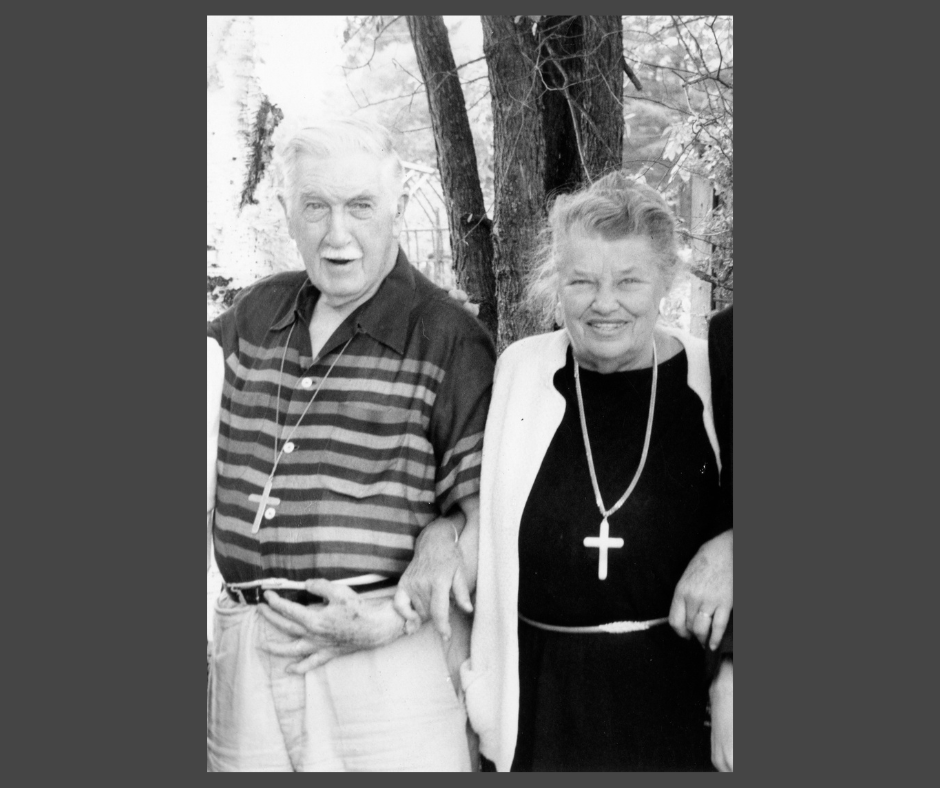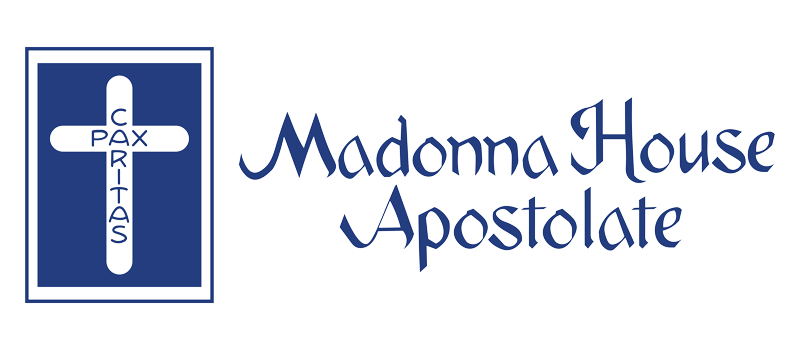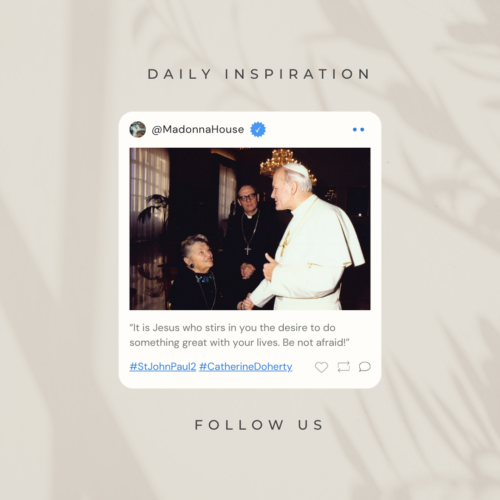
Alleluia, Alleluia! My journey’s end is but my beginning.
This year is the 50th anniversary of the death of Catherine’s husband, Fr. Edward J. Doherty. In early 1975, Fr. Eddie suffered a serious heart attack while visiting our house in Winslow, Arizona. Catherine travelled to see him, and wrote about this as a journey into faith. Fr. Eddie recovered enough to return to Combermere, but died a couple of weeks later from other health issues.
Here are excerpts from Catherine’s subsequent article in the June 1975 issue of Restoration.
◈◈◈
In the last issue of Restoration I wrote about my “Long Journey.” The one that really wasn’t a journey but a pilgrimage.
The one that made me travel from Combermere to Arizona to the bedside of Father Eddie, who was so terribly sick, and yet a journey that wasn’t “travelling” as we understand it today, but was truly a pilgrimage of faith that made me stand still while physically and geographically I moved. The one that made me stand still and yet enter daily, hourly, ever deeper into the uncharted realms of faith!
It was a strange kind of journey into faith which, when you first enter it, is dark indeed, and where one journeys only because one believes that the darkness comes from the blinding light of the Lord who walks with us throughout this journey.
Slowly, if one continues to pray for faith — to be faithful to faith —you feel its burning fire that at first was kindled almost with green wood and now begins to be an ever-growing fire that in turn begins to illuminate the early darkness of one’s pilgrimage into its depths.
Faith now becomes lighter, clearer, if one may say so, yet it still demands a pilgrimage without any compass, without any direction except the direction of one’s own heart, led by the Holy Spirit unto the mountain of the Lord.
Yes, I told it all in a previous article in Restoration when I described my “Long Journey,” but today, as I write this article, I realize how strong is faith, that tremendous gift that only God can give and which we should ask for constantly.
One Theme-Faith!
I remember my escape from Russia, so fraught with endless danger. It was faith that brought me forth, that brought me through those dangers. I remember being condemned to die from hunger at one point of this escape. It was faith that carried me through the sufferings of body and soul.
It was faith that carried me through, also, when I came as a stranger to a strange land. Step by step, I reviewed my past, and I knew that faith alone sustained me through all the joys and sorrows of a long life.
And now, I had to face parting with Father Eddie. True, we had “parted” long ago and far away, in a manner of speaking, for we took avow of chastity twenty years ago and thus died to each other; and yet in the dying we lived, in that same faith that I am talking about, gloriously, joyously, painfully, yet always exultantly, because we had made that vow in faith!
On May 4, 1975, early in the morning, in a little hospital in the little country town of Renfrew, Ontario, Father Eddie died.
He died surrounded by loving people — his beloved doctor, Dr. Mickus; and his nurse, Clare Becker; Father Brière, who said Mass at his bed side during his stay at the hospital; and myself, who was around but not present at the very moment of his death but was told about it with a joyous Alleluia.
What else could we say in faith but “Alleluia, Alleluia!” And there was no doubt in my mind that Father Eddie was now reunited with the Lord he loved so passionately and so well.
I said to myself, “Now you have reached journey’s end. Your long journey is finished,” but even as the thought came to me, I realized that it was far from finished. In a manner of speaking, it had just begun in a new dimension
End Equals Beginning
The fire that the Lord had kindled along the way to illuminate the darkest passages of the faith he had given me so lavishly, so beautifully, now ceased to be a fire and became himself.
Now I understood dimly, but nevertheless clearly, that this wasn’t my journey’s end. It was my journey’s beginning, only instead of walking for so long either in total darkness of faith or in its sort of twilight, I now walked in its blinding light, for I understood the reason for faith, for baptism that gave us faith.
The reason for faith is union with God, which began with the little toddling steps of an infant through the strong steps of youth, and the not so strong steps of middle-age and old age, but all leading to God. This is also the essence of hope — that we shall see God.
My heart danced. Yes, my heart danced with joy, and a great song rose from it praising God, for I knew somehow that Father Eddie who, like all of us has come from the mind of the Father, had now returned to where we all shall return — the heart of the Father.
Yes, a great song rose in my heart, for faith had solved for me the mystery of death. It truly was a door to life. Alleluia, Alleluia! My journey’s end is but my beginning.
Father Eddie’s wake was held in the Madonna House chapel of Our Lady of the Woods. On May 7, he was buried in the Combermere parish cemetery, dressed in his Byzantine vestments, in a white-pine coffin made by our men.




